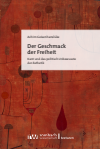Zusammenfassung
Der Geschmack der Freiheit fragt nach dem Zusammenhang von Ästhetik und Politik bei Kant und verschiedener auf ihn aufbauender Theorien (Arendt, Rancière, Rorty u.a.). Mit dem politisch Unbewussten rücken zugleich literarische Texte von Hölderlin bis Proust, Nabokov und Wallace in den Blick. Als Alternative zu Kants Theorie des Schönen entwickelt die Arbeit eine sinnlich orientierte Theorie des Angenehmen, auf deren Grundlage zugleich ein genuin ästhetischer Zugang zu demokratischen Lebensformen der Moderne erschlossen wird. Damit begegnet die Arbeit kritisch dem Unbehagen an der Demokratie in der Gegenwart.
Abstract
‘The Taste of Freedom’ examines the connection between aesthetics and politics in Kant and various theories based on his ideas (Arendt, Rancière, Rorty, etc.). Using the idea of political unconsciousness, this book also addresses literary texts from Hölderlin to Proust, Nabokov and Wallace. As an alternative to Kant's theory of what is beautiful, the book develops a sensually oriented theory of what is pleasant, on the basis of which a genuinely aesthetic approach to democratic forms of life in modernity is developed. This work thus critically confronts the discontent with democracy today.
Schlagworte
Arendt aesthetics criticism Ästhetik Demokratie democracy freedom Freiheit Gegenwart modernity philosophy Hölderlin political unconscious Kant Kritik sensory-oriented theory of the pleasant Moderne theory of the beautiful Nabokov Philosophie politisch Unbewusste Proust Rancière Rorty sinnlich orientierte Theorie des Angenehmen Theorie des Schönen Wallace- Kapitel Ausklappen | EinklappenSeiten
- 221–228 Literaturverzeichnis 221–228

